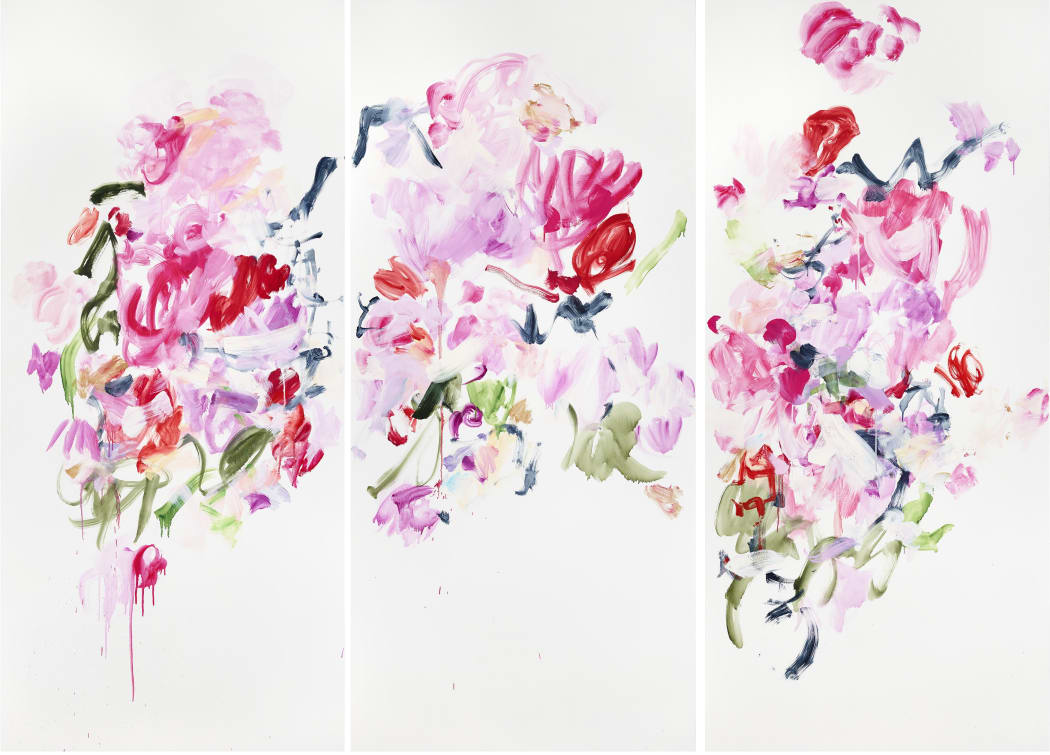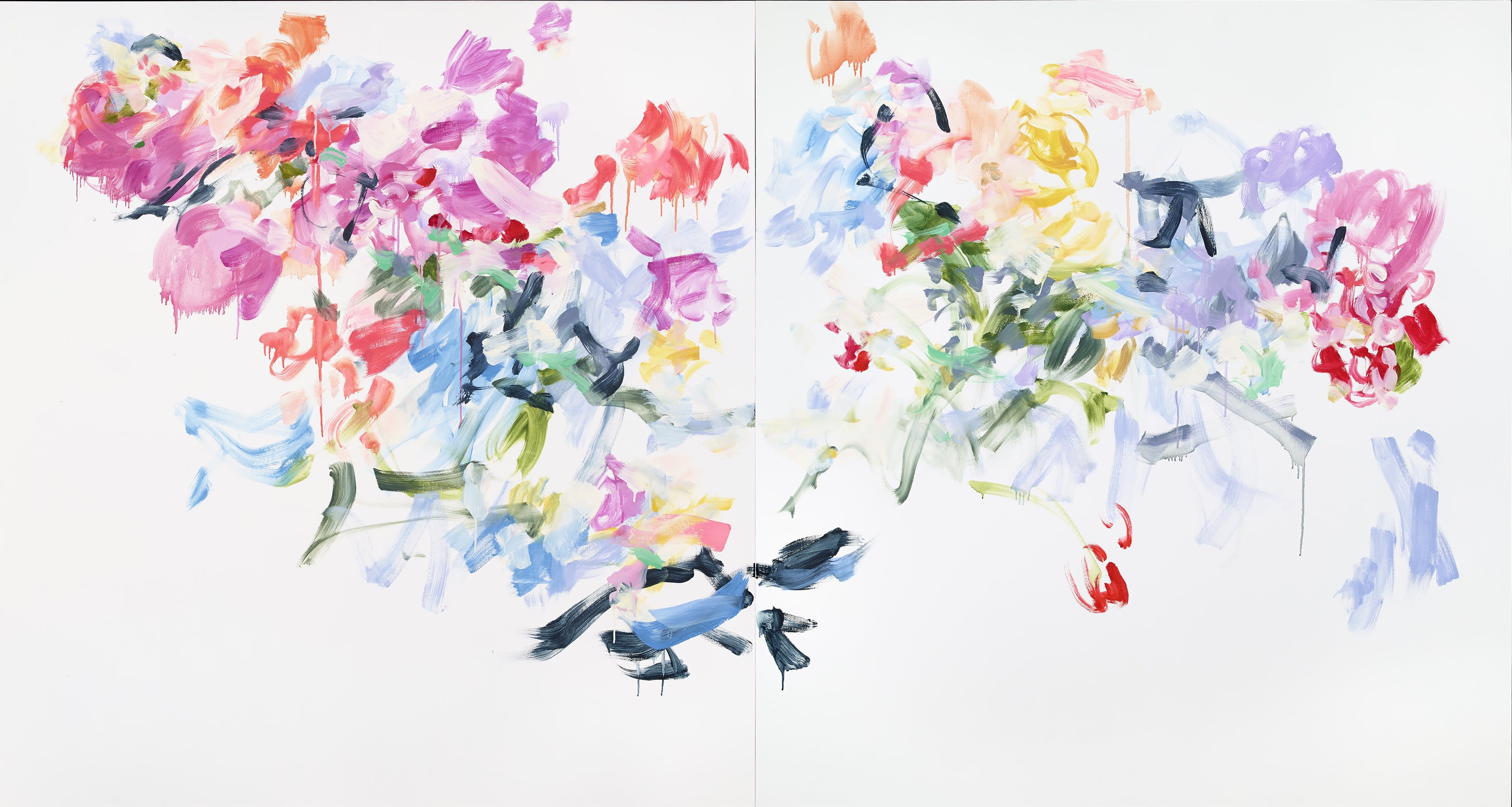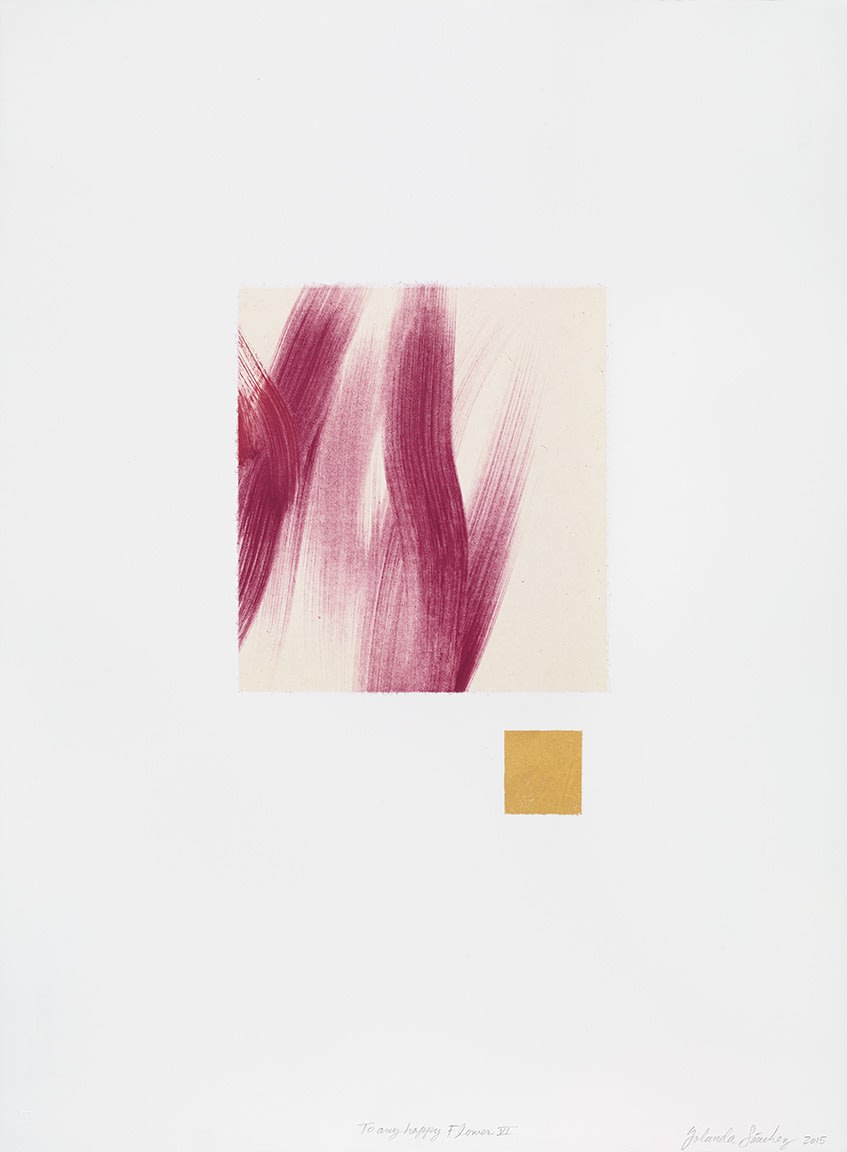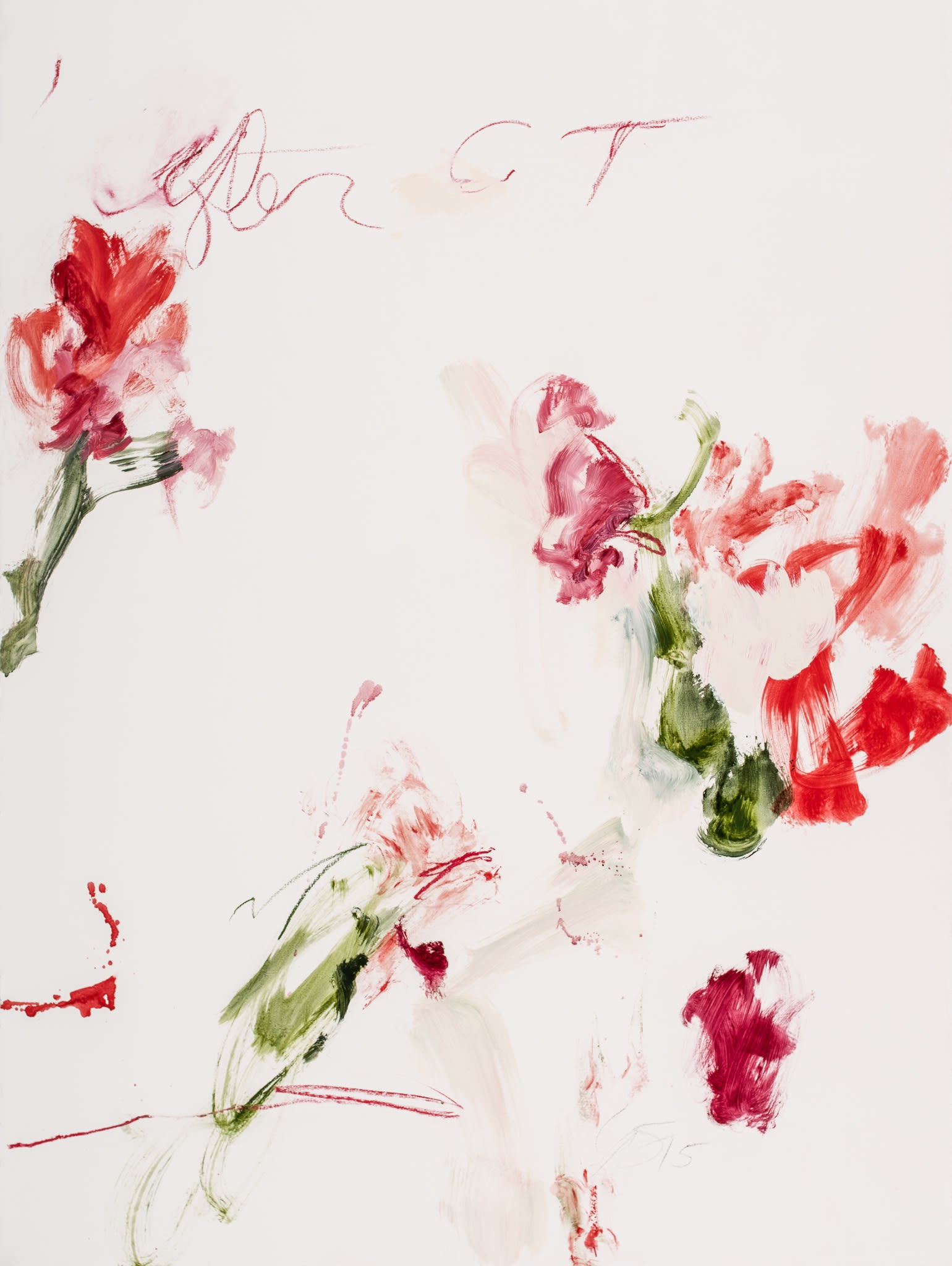
Every week, we'll be sitting down with one of our gallery artists to discuss their work, process, inspiration, and stories. This week we're speaking with Yolanda Sanchez.

"There is Only the Dance"
Yolanda Sanchez's wildly expressionistic brushwork infused with the elegant control of calligraphy is grounded by the quiet of expansive passages of white canvas. Using color as a vehicle for experience heightened by gesture, composition, and texture, her paintings provide a poetic refuge from the day to day. They reference nature, but remain independent from narrative. Instead, Sanchez translates and projects emotional and sensational experiences. Subject and object are dissolved and replaced by a presence, the essence of a life force created by rhythm, harmony, and space. Born in Cuba, raised in Miami, and influenced by Eastern philosophy and Asian art, Sanchez's paintings have a culturally complex richness to them. They transcend borders and speak to the global human experience. We spoke with Sanchez about how she translates this into her work, how the variety of art forms she practices influence one another, and how her work is a reflection of her spirituality.
When and how did you first become introduced to art, and how did you start becoming an artist yourself?
I have very few memories of my early years in Cuba, where I was born, but I do know that I was always attuned to color. In subsequent periods of childhood, I was always involved in artistic class projects, and often simply making things. My formal training came much later in life, after I had developed a career in clinical psychology. I believe that an artist is formed the moment you begin to see — visual art is about how you uniquely see the world. It is not about technique or style. These things come later. For me, becoming an artist was about learning to pay attention.
You've practiced a few different art forms, including dance, textile work, and calligraphy. How do they inform one another, if at all?
In some way, all the various art forms I have practiced relate to one another. They are really about the same things: awakening, creating a moment of contemplation, a presence without form. They are all a kind of visual poetry, if you will, using my tools of color, mark, light, and the materiality of the paint itself. The work is about being present in the world. It's celebratory. Even my textile work reflects these aims.

"Dwell in Possibility"
Could you talk a little about your multicultural approach to your work?
I am a product of a “supersyncretic” culture. This is a key term introduced by the historian Antonio Benitez-Rojo, which suggests that the Caribbean archipelago, by virtue of how it developed, is a heterogeneous culture that draws and syncretizes (not synthesizes)from multiple influences. The Caribbean is a “cultural sea without boundaries.” A hallmark of the Caribbean is improvisation, fusing “paradox, eccentricities, fluxes and displacements.”
My interest in Eastern philosophy and Asian art is compatible within this framework, and is one example of being open to diverse influences. I am roaming and crossing borders. I am a practicing Buddhist, yet I cannot deny where I come from. So there is an aspect of the carnivalesque (an apt description of the Caribbean) which accounts for my interest in color, rhythm and movement. The Asian becomes Caribbean, not the other way around.(This is the most important question as I am still trying to figure this out!)

"A Joyful Conversation"
What are your inspirations and influences?
My work is influenced by poetry, Eastern philosophy, and the compositional structures of Chinese and Japanese classical ink painting. My interest is not in making art that looks Asian, but in tapping into the energy or power that lies underneath these aesthetics. I focus on maintaining nature as my central element and making work that is spiritually infused. I am influenced by the abstract expressionists that work with the calligraphic mark — Cy Twombly, Jackson Pollock, Willem de Kooning, Joan Mitchell — and by the great colorists – Claude Monet, Henri Matisse and Pierre Bonnard.
What is your process like?
My work is completely process-oriented. It is initiated and driven by color; a certain color palette is my first point of inspiration, and from there the work takes off. It is always about a conversation with the work. That is, the work tells me what is needed next, and it never evolves in a predetermined way. It is always a surprise, for better or worse! I suppose there is always a sense of trying to create a work that is harmonious in some way, even in instances in which there is asymmetry.

"To Any Happy Flower VI"
Your monotypes are a contrast to your paintings. Do you consider them reactive, in a way? How do they relate to each other?
This set of monotypes appears to be unrelated to my other work, yet, they reflect my current primary influences and tools: calligraphic marks, color, a response to nature and poetry. Specifically, this series is a visual poetic response to waka poetry written by women poets from the Heian period in Japan. Waka is based on an image that evokes a human emotion. It was the language of love, colored by dreams and the seasons.
How has your work been evolving lately, and where do you see it going from here?
My work is always evolving, sometimes in ways that I am not completely aware of. Subtle changes begin to appear in the work over time. The color may become more homogeneous, or the marks change in character, or I begin to explore different palettes.
My work is very much related to my spiritual development as a human being and my study and practice of Buddhism. I believe that my work moves forward and opens as my spirituality moves forward. It is my desire to develop more awareness, greater attention and compassion, and to sharpen my senses. Making art helps me toward this end.
I might add here that prompted by a desire to visually explore my cultural origins, I recently participated in a workshop about "place," focusing on the idea that in order to know where you are, you need to know where you are from. Since I have no real memories of my own from Cuba, this presents an interesting challenge for me. I am investigating this in various ways, including a more detailed study of where I am now, but it is too early for me to comment as to how this will inform and change my work. Issues of “place” and where I belong have now become important for me.

"After CT #1"
Explore more of Yolanda Sanchez's work here.
